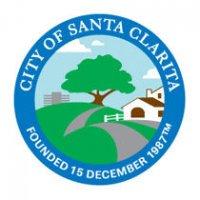Santa Clarita: Two Routes to Water Savings
Smart Irrigation Technology Stories
Population: 180,000
County: Los Angeles
Program Highlights
- Santa Clarita’s parks department purchased and installed the city’s own weather station in 2008 as a first step toward implementing a “smart irrigation” system. Two city staff provide programming and maintenance of system.
- An irrigation system weather station and computer system send information each morning to irrigation controllers in city parks with instructions on how much water to dispense at individual irrigation sites throughout the city.
- The city’s Landscape Maintenance District retrofitted over 500 irrigation controllers since 2007 with weather-based irrigation controllers. The district contracts with a company for the internet-based computer system, wireless controller network, technology updates and customer support.
- The Parks Department provides continual education for its small staff to keep them engaged and comfortable with the new technology. The Landscape Maintenance District provides training for the large number of landscape contractors it uses to maintain its parks and open space.
- Using the smart irrigation system, the city Parks Department saved 15 million gallons of water from 2009 to 2010. Using the smart irrigation system, the Landscape Maintenance District saved 180 million gallons of water in 2010, compared to the amount used in 2007.
The Rest of the Story…
Santa Clarita Parks Division Story
Santa Clarita is a city of 180,000 residents located about 30 miles north of Los Angeles. Beginning in the late 1980s, the parks department began researching computerized irrigation controllers that would enable staff to remotely monitor what was going on in the field. About 20 years ago, the parks department staff started installing weather sensing irrigation equipment in city parks. In 2008, the department purchased a weather station, located in the city’s Central Park, that communicates to a centralized computer system. Every morning the weather station and computer system send information to irrigation controllers in city parks with instructions on how much water to dispense at individual irrigation sites throughout the city.
Since the city owns the weather station and on-site weather controllers, it does not pay a subscription fee for the service. The Parks Department assigns responsibility for programming irrigation controllers to two employees. These staff receive computer-related training to ensure that the centralized computer system is appropriately programmed in order to maximize efficiency.
Programming the computer system and the onsite irrigation controllers is both a science and an art. Parks department staff still “walk the parks” with soil probes to make adjustments to the controllers, as needed. Staff typically adjusts the system’s computer program three to four times per year, reflecting seasonal weather changes. The turf team, which is responsible for mowing parks, also alerts the computer programmers about needed irrigation system adjustments.
The smart irrigation and weather station system saved approximately 15 million gallons of water in 2010 compared to 2009.
The Landscape Maintenance District Story
The City of Santa Clarita formed a Landscape Maintenance District, a benefit assessment district,1 in 1997. The District maintains 780 acres of irrigated landscapes, including slopes, medians, and any other common areas assessed for the benefit.2 It also is responsible for additional non-irrigated open space and for brush clearance to reduce fire hazards.
After evaluating the amount of water used each year (890 million gallons), staff believed they could improve efficiency and reduce water use by 20 to 40 percent. Based upon successful tests at pilot locations that achieved 20 to 25 percent water savings, staff projected that installing “smart” irrigation controllers would have the most significant and immediate impacts. Thus, between 2007 and 2011, district staff replaced 526 existing irrigation controllers with weather-based irrigation controllers. The district also contracted with a vendor to install and support an internet-based central irrigation management and control system.
The Landscape Maintenance District anticipated that educating staff and contractors would be important to achieving the desired water savings. Thus, the district required the vendor to provide training sessions for staff in English and Spanish during each phase of installation. Additionally, the district also provided six training sessions to every landscape contractor with whom it works.
While installing the first 103 controllers, the district found that field staff and landscaping contractors needed training on how to program the controllers and operate the computer technology. In addition, since many landscaped areas were found to be oversaturated, the training included education about changing irrigation practices from flood irrigation to watering for minimal plant needs. The transition to watering for minimal plant needs was difficult at first as there was slight distrust of the new technology. Over time however, the new system proved effective, thus demonstrating to staff the value of the smart irrigation system.
Water use decreased substantially as a result of the smart irrigation system. The district uses 2007, when it used 700 million gallons of water, as a base year for comparisons. In 2010, even with some marginal growth in irrigated acreage, the district used 25 percent less water compared to 2007 (or 525 million gallons). The district realized a three year average (2007-2009) savings of 147 million gallons per year, achieving its goal of reducing water use by 20 percent (compared to 2007).
In addition, the local water provider recognized the city’s Landscape Maintenance District for helping achieve the 20 percent reduction in urban water use by 2020 as required by state law.3 The district plans to retrofit hardware, monitor different water pressures and refurbish medians with low water-use plants to achieve further savings in the future.






